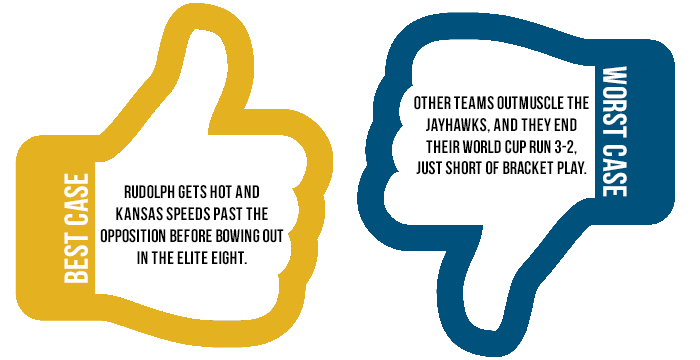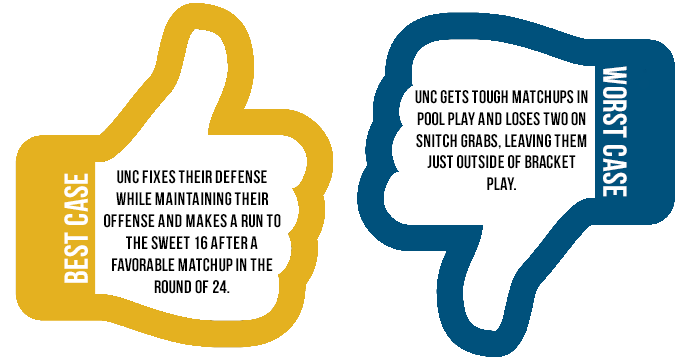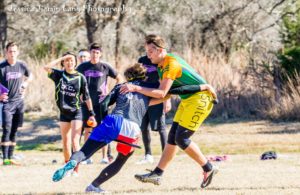- Rule, Britannia, no more?
- Unpopular Opinions: US Quadball Cup 2023
- Proven Contenders: University of Virginia
- Proven Contenders: Rutgers University
- Proven Contenders: University of Michigan
- Proven Contenders: Creighton University
- Different Perspectives: A Look Inside USA Ultimate
- Antwerp QC, Much of Belgian Core, Leaves Competitive Quidditch
Part IX
- Updated: February 13, 2015
Rock Hill Roll Call is your in-depth guide to the 80 teams that will compete for the title of World Cup 8 Champion. We’ve reached out to writers and analysts all over the country to bring you the lineups, strategies, focal points and aspirations of each and every attending team. Whether you are looking for a leg up on the competition or just want a detailed preview of the sport’s main event, this is the place for you.
 By Alex Wilson
By Alex Wilson
University of Kansas broke onto the quidditch scene by winning the Midwest Regional Championship in 2011. Since then, they have set a high bar for themselves and have remained a consistent Top-20 team that is known for their height, speed and excellent seeker play. But what has really allowed the team to attain their goals has been solid beater play, especially from Kate Cooley.
On defense, Cooley forces tremendous pressure on the opposition and is able to force early passes or shots that her chaser line can track down. Her positioning leaves very few holes for offenses to take advantage of, and she consistently makes adjustments so that opponents can rarely track down an open lane to drive. She went down in the fall with a leg injury, causing her to be sidelined during the Midwest Regional Championship. Kansas has only two losses this season: the game against University of Arkansas in which she obtained the injury and a snitch-range game against Ball State University.
In order to continue to succeed and make a deep run at World Cup 8, Kansas will need a healthy Cooley. Keir Rudolph may make the grabs, but Cooley’s beater play is needed to assist him in close games. Her ability to coordinate with other beaters is invaluable if Kansas wants to give their seeker a chance.
 By Anonymous
By Anonymous
The scouting report on Kansas has barely changed since Spring Breakout in 2013. They’re fast, they have crisp passing and if a game is in snitch range, your life becomes a nightmare, as “The Reverend” Rudolph steps on the pitch to bless the snitch with his greatness.
The names have changed; instead of Connor Drake running point, the Jayhawks have second-year player Adam Heald. The 6-foot-5 keeper has a good, mid-range shot and when paired with 7-footer Bunmi Morohunfola, Kansas towers over the competition.
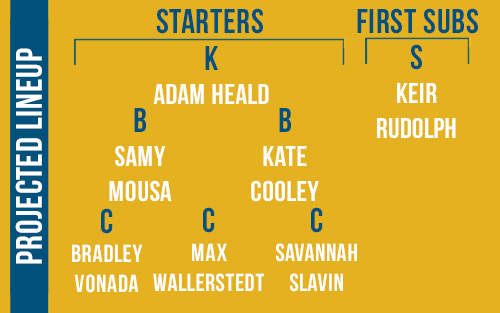 The Jayhawks rely on their shooting and speed with captain Max Wallerstedt being their most explosive, skilled and dangerous quaffle player. Kansas tends to avoid crashing the hoops unless it is for a flashy, fast-break dunk, but Wallerstedt plays like Russell Westbrook on a good day: lots of flash, fire and the ability to score from everywhere.
The Jayhawks rely on their shooting and speed with captain Max Wallerstedt being their most explosive, skilled and dangerous quaffle player. Kansas tends to avoid crashing the hoops unless it is for a flashy, fast-break dunk, but Wallerstedt plays like Russell Westbrook on a good day: lots of flash, fire and the ability to score from everywhere.
Veteran players Bradley Vonada, Brian Kessler and Austin Pitts are all able to strike on the fast break, with Pitts having developed a long-range shot to spare his previously injured shoulder.
The hyper-aggressive beating style of Samy Mousa is a small change to the days of Kansas past. Mousa has plenty of heart, and when he isn’t frustrated, he can come up with new, innovative ways to keep teams on their toes.
Rudolph has seemed mortal this year, but simply because teams are dialing in on him and are focusing on keeping him as far away from snitches as possible. If a team doesn’t have bludger control against Kansas when the snitch arrives, things can get ugly fast.
The weaknesses to exploit are the lack of outstanding female depth and physicality. Kansas can get physical, but they try to avoid it because once they get physical, they get cards. Getting in the heads of Kansas with physicality is the best way to beat them.
 By Kyle Jeon
By Kyle Jeon
While their best-known players are all quaffle players, UNC’s rise or fall at World Cup 8 will depend on the development of their beaters. Led by Kyle Bullins, the UNC beater line is aggressive and demonstrates effective offensive beating. Part of the reason why Miceli, Andrew McGregor and Lee Hodge can drive and finish at the hoops is because Bullins and company create have no qualms about collapsing onto the opposition’s hoops to generate chaos.
Unfortunately, while they excel on the offensive side—or perhaps because they do—they suffer defensively. Due to their aggressive beating, they often leave themselves vulnerable to the transition attack. This is especially the case when defending beaters can time the beater engagement properly, leaving the UNC line bludgerless. And while UNC’s offense is potent, they are essentially choosing to leave themselves vulnerable to fast-break transitions in order to to gain an advantage attacking a set, half-pitch defense. And numbers will show you, this can often lead to residence on the wrong side of the score-line.
This is not to say that UNC should abandon their style of beating, since it is one of the keys to their success this year. UNC’s beaters simply need to gain more experience and understand when throwing the bludger will make a difference on offense. Once they begin to intuitively understand the risk vs. reward in aggressive beating and are able to bring themselves back on defense before a fast break can occur, UNC’s defense will do enough that their potent offense will put most teams out of snitch-range.
 By Anonymous
By Anonymous
UNC’s surprise run to the Mid-Atlantic Regional Championship finals and their over-time thriller against University of Maryland probably wasn’t a surprise to anyone who actually played them this year. If UNC’s motto isn’t “we don’t care if you score on us, we’ll always score more than you,” it should be.
The first and most notable thing about their offense is their beating. The UNC beaters are not afraid to invade your defense and will regularly find themselves beyond the opponent’s keeper line. They run 1.5 effectively and will clear out all your beaters and maybe even a few chasers. This allows for the trio of Miceli, Hodge and McGregor to drive to the hoops and finish. Outside of their driving game, McGregor is their most potent off-ball chaser, as he can juke out multiple defenders and either shoot or drive off the pass.
So how do you stop their offense?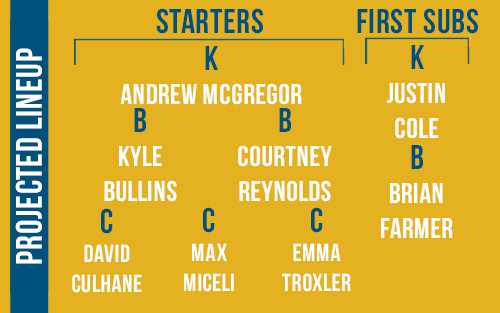
You use their strengths against them.
Because they are drive heavy and offensive-beating oriented, compact your defense in front of the hoops and dare their beaters to come as close as possible—which they will dare to do. Engage in a beater battle and dog pile their driving chaser who can’t build up momentum since he’s starting so close to the hoops. Through it all, make sure your tallest chaser is man-marking McGregor, eliminating him as a passing option.
On offense, transition early and often if they are bludgerless. If they have fallen into a set defense, spread your offense to make force their beaters to move back and forth. This will create openings for a drive. And don’t forget to utilize the back of their hoops, a region where their chasers are more lenient.



